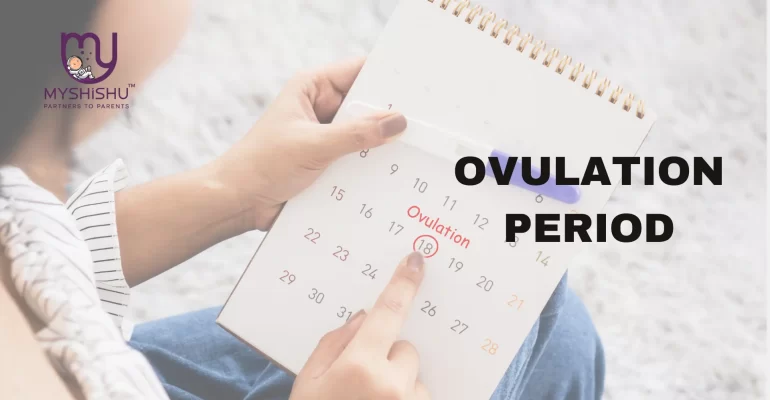Ovulation Period in Pregnancy: A Reliable Guide
Ovulation Period in Pregnancy: A Reliable Guide
Introduction
Welcome to a guide on the topic of ovulation period in pregnancy. As you embark on the incredible journey of pregnancy, there’s a world of wonder and anticipation awaiting you. From the moment you decide to expand your family, you’re filled with dreams of holding your precious little one in your arms. But before that moment arrives, there’s an essential step that lies at the heart of conception: ovulation period in pregnancy.
Understanding your ovulation period in pregnancy is like unlocking the key to the door of motherhood. It’s a natural, awe-inspiring process that plays a vital role in your ability to conceive. In this blog, we’ll delve into the intricacies of ovulation period in pregnancy, exploring its significance, how to identify it, and what it means for your journey towards pregnancy.
Whether you’re just beginning to plan for a baby or you’ve been on this path for some time, this guide is here to empower you with knowledge, support, and encouragement. Because every step you take towards understanding your body brings you closer to the miracle of new life.
So, dear mothers-to-be, let’s embark on this enlightening journey together, as we unravel the mysteries of ovulation period in pregnancy and embrace the beauty of conception.
Table of Contents
What is Ovulation Period in Pregnancy?
Ovulation period in pregnancy is a pivotal phase in a woman’s menstrual cycle, marking the release of a mature egg from one of the ovaries. This egg, or ovum, is then ready to be fertilized by sperm, leading to conception and the potential for pregnancy. The ovulation period in pregnancy typically occurs approximately midway through the menstrual cycle, although the exact timing can vary from woman to woman.
During the menstrual cycle, the ovaries undergo a complex series of hormonal changes orchestrated by the pituitary gland and the ovaries themselves. Around the time of ovulation period in pregnancy, the pituitary gland releases a surge of luteinizing hormone (LH), which triggers the release of the mature egg from its follicle within the ovary. This process is known as ovulation period in pregnancy and typically occurs around day 14 of a 28-day menstrual cycle, although it can vary depending on the length of the menstrual cycle and individual factors.
Once the egg is released, it travels down the fallopian tube towards the uterus, where it awaits fertilization by sperm. The egg is viable for fertilization for approximately 12-24 hours after ovulation period in pregnancy, making this a relatively short window of opportunity for conception to occur.
Identifying the ovulation period in pregnancy is crucial for couples trying to conceive, as it represents the most fertile time in the menstrual cycle. By timing intercourse to coincide with ovulation period in pregnancy, couples can maximize their chances of conception and increase the likelihood of a successful pregnancy.
Various methods can be used to track ovulation period in pregnancy, including monitoring menstrual cycles, tracking basal body temperature, observing changes in cervical mucus, and using ovulation predictor kits. By understanding the ovulation period in pregnancy and utilizing these methods to pinpoint the most fertile days in the menstrual cycle, couples can optimize their chances of achieving pregnancy and embarking on the journey to parenthood.
Identifying Your Ovulation Period
Identifying your ovulation period is crucial when trying to conceive as it marks the window of opportunity for fertilization. While ovulation period in pregnancy typically occurs around the middle of your menstrual cycle, there are various methods to help you pinpoint this pivotal time more accurately:
- Menstrual Cycle Tracking: Start by keeping track of your menstrual cycles on a calendar. Note the first day of your period as day one and count forward to estimate when ovulation period in pregnancy is likely to occur. Ovulation period in pregnancy usually happens about 14 days before the start of your next period, but this can vary from woman to woman.
- Basal Body Temperature (BBT) Charting: Your basal body temperature (BBT) is your body’s lowest resting temperature, which typically rises slightly after ovulation period in pregnancy due to hormonal changes. To track your BBT, take your temperature every morning before getting out of bed using a basal body thermometer. Plot your temperatures on a chart and look for a sustained increase, indicating that ovulation period in pregnancy has occurred.
- Cervical Mucus Monitoring: Pay attention to changes in your cervical mucus throughout your menstrual cycle. Around ovulation period in pregnancy, cervical mucus becomes clear, slippery, and stretchy, resembling raw egg whites. This fertile cervical mucus helps sperm travel through the reproductive tract to reach the egg.
- Ovulation Predictor Kits (OPKs): Ovulation predictor kits (OPKs) are available over-the-counter and detect the surge in luteinizing hormone (LH) that occurs just before ovulation period in pregnancy. Follow the instructions on the kit to test your urine daily, typically starting a few days before you expect to ovulate. A positive result indicates that ovulation is likely to occur within the next 24-36 hours.
- Fertility Apps and Monitors: There are many smartphone apps and fertility monitors available that can help you track your menstrual cycles, ovulation period in pregnancy, and fertility signs. These apps often use algorithms to predict your fertile window based on data you input about your cycle length, BBT, and other fertility indicators.
By using one or more of these methods to identify your ovulation period in pregnancy, you can increase your chances of conceiving by timing intercourse to coincide with your most fertile days. Remember that each woman’s cycle is unique, so it may take some time and experimentation to find the method that works best for you. Additionally, factors such as stress, illness, or travel can affect ovulation timing, so be patient and flexible in your approach.
Why is Ovulation Period Important for Pregnancy?
The ovulation period in pregnancy is critically important because it marks the optimal time for conception to occur. Here’s why:
- Fertility Window: The ovulation period in pregnancy represents the most fertile window in a woman’s menstrual cycle. During this time, the egg is released from the ovary and is available for fertilization for approximately 12-24 hours. Sperm, on the other hand, can survive in the female reproductive tract for up to five days. By timing intercourse to coincide with ovulation period in pregnancy, couples can maximize the chances of sperm being present when the egg is released, increasing the likelihood of fertilization.
- Short Viability of Egg: Once released, the egg has a short window of viability for fertilization. If not fertilized within 12-24 hours, the egg begins to disintegrate, and the opportunity for conception is lost. Therefore, accurately identifying and timing intercourse around ovulation period for pregnancy is crucial to ensure that sperm are available to fertilize the egg during this narrow window of opportunity.
- Optimal Conditions for Conception: During ovulation period for pregnancy, the female reproductive tract undergoes changes that create optimal conditions for conception. Changes in cervical mucus make it easier for sperm to swim through the cervix and reach the fallopian tubes, where fertilization occurs. Additionally, hormonal changes associated with ovulation stimulate changes in the uterine lining, making it more receptive to implantation if fertilization occurs.
- Increased Chance of Successful Pregnancy: Couples who have intercourse during the ovulation period for pregnancy have a significantly higher chance of achieving pregnancy compared to those who do not time intercourse with ovulation period for pregnancy. Studies have shown that conception rates are highest when intercourse occurs in the days leading up to ovulation and on the day of ovulation period for pregnancy itself.

Tips for Maximizing Your Fertility
Maximizing fertility involves adopting lifestyle habits and practices that support reproductive health and increase the likelihood of conception. Here are some tips for optimizing fertility:
- Maintain a Healthy Weight: Being underweight or overweight can affect hormone balance and disrupt ovulation. Aim for a healthy body mass index (BMI) by following a balanced diet and engaging in regular exercise.
- Eat a Nutrient-Rich Diet: Consume a diet rich in fruits, vegetables, whole grains, lean proteins, and healthy fats. Certain nutrients, such as folic acid, iron, vitamin D, and omega-3 fatty acids, are particularly important for reproductive health.
- Stay Hydrated: Drink plenty of water throughout the day to stay hydrated. Proper hydration supports overall health and can help maintain optimal cervical mucus production.
- Limit Caffeine and Alcohol: Excessive consumption of caffeine and alcohol can negatively impact fertility. Limit intake of caffeinated beverages and alcoholic drinks, and opt for water or herbal teas instead.
- Quit Smoking: Smoking has been linked to decreased fertility in both men and women. If you smoke, consider quitting to improve your chances of conceiving.
- Manage Stress: Chronic stress can disrupt hormone balance and interfere with ovulation. Practice stress-reduction techniques such as yoga, meditation, deep breathing exercises, or engaging in hobbies and activities you enjoy.
- Get Adequate Sleep: Prioritize sleep and aim for 7-9 hours of quality sleep per night. Proper sleep supports hormone regulation and overall well-being, which are essential for fertility.
- Exercise Regularly: Engage in regular physical activity, but avoid excessive exercise, which can disrupt menstrual cycles and ovulation. Aim for a balanced exercise routine that includes both cardiovascular exercise and strength training.
- Track Your Menstrual Cycle: Monitor your menstrual cycles and track ovulation using methods such as basal body temperature charting, monitoring cervical mucus, or using ovulation predictor kits. Understanding your menstrual cycle can help you identify your most fertile days and time intercourse accordingly.
- Limit Exposure to Environmental Toxins: Minimize exposure to environmental toxins such as pesticides, chemicals, and pollutants, which can negatively impact reproductive health. Use natural cleaning products, eat organic foods when possible, and avoid exposure to harmful chemicals.
Ovulation Disorders and their Impact on Fertility
Ovulation disorders are conditions that disrupt the normal process of ovulation, making it difficult for a woman to release eggs from her ovaries. These disorders can significantly impact fertility by reducing the chances of conception. Here are some common ovulation disorders and their impact on fertility:
- Polycystic Ovary Syndrome (PCOS): PCOS is a hormonal disorder characterized by enlarged ovaries with multiple small cysts. Women with PCOS often have irregular or absent menstrual periods due to hormonal imbalances, including high levels of androgens (male hormones) and insulin resistance. Irregular ovulation or anovulation (lack of ovulation) is a hallmark of PCOS, leading to difficulties in conceiving naturally.
- Hypothalamic Amenorrhea: Hypothalamic amenorrhea is a condition characterized by the absence of menstrual periods due to disruptions in the hypothalamus, a region of the brain that regulates reproductive hormones. Factors such as excessive exercise, low body weight, stress, or disordered eating patterns can disrupt hypothalamic function and inhibit ovulation, leading to infertility.
- Premature Ovarian Insufficiency (POI): Also known as premature ovarian failure, POI occurs when a woman’s ovaries stop functioning before the age of 40. This can result in irregular or absent menstrual periods, decreased ovarian reserve, and early menopausal symptoms. Women with POI may experience infertility due to insufficient egg production and ovulation.
- Hyperprolactinemia: Hyperprolactinemia is a condition characterized by elevated levels of prolactin, a hormone that stimulates milk production in breastfeeding women. High levels of prolactin can suppress ovulation and disrupt menstrual cycles, leading to infertility. Causes of hyperprolactinemia include pituitary tumors, medication side effects, or thyroid dysfunction.
- Thyroid Disorders: Thyroid disorders, such as hypothyroidism (underactive thyroid) or hyperthyroidism (overactive thyroid), can disrupt ovulation and menstrual cycles. Thyroid hormones play a crucial role in regulating metabolism and reproductive function. Imbalances in thyroid hormone levels can affect the hypothalamic-pituitary-ovarian axis, leading to ovulation disorders and infertility.
- Luteal Phase Defect: The luteal phase is the second half of the menstrual cycle, during which the uterine lining thickens in preparation for implantation of a fertilized egg. A luteal phase defect occurs when the uterine lining does not develop adequately, making it difficult for a fertilized egg to implant and sustain a pregnancy. This can result in recurrent miscarriages or difficulty conceiving.
These ovulation disorders can significantly impact fertility and may require medical intervention to address underlying hormonal imbalances or reproductive issues. Treatment options may include lifestyle modifications, medication, hormonal therapies, or assisted reproductive technologies (ART) such as in vitro fertilization (IVF) or ovulation induction. If you suspect you have an ovulation disorder or are experiencing difficulty conceiving, it’s essential to consult with a healthcare provider or fertility specialist for evaluation and personalized treatment recommendations from your healthcare provider.
Additional Common Questions
-
How long does ovulation last?
Ovulation typically lasts for about 12-24 hours, during which time the egg is released from the ovary and is available for fertilization. However, sperm can survive in the female reproductive tract for up to five days, so the fertile window extends beyond ovulation.
-
What if I don’t ovulate every month?
Some women may experience occasional anovulation (lack of ovulation), which can be caused by factors like stress, illness, or hormonal imbalances. If you’re not ovulating regularly, it’s essential to consult with a healthcare provider to identify the underlying cause and explore treatment options.
-
What if I have ovulation pain (mittelschmerz)?
Some women experience mild discomfort or pain, known as mittelschmerz, around the time of ovulation. This is usually harmless and can be a helpful sign that ovulation is occurring. However, severe or persistent pain should be evaluated by a healthcare provider to rule out other possible causes.
-
Can I rely on ovulation prediction methods to prevent pregnancy?
Ovulation prediction methods are not as reliable as other forms of contraception for preventing pregnancy. While tracking ovulation can help identify fertile days, it’s not foolproof, and there is still a risk of pregnancy if you have unprotected intercourse during this time.
Conclusion
In conclusion, understanding your ovulation period is a vital aspect of the journey towards conception and pregnancy. As a mother-to-be, recognizing the signs and symptoms of ovulation can empower you to take control of your fertility and increase your chances of conceiving.
The ovulation period represents a short window of opportunity each month when your body releases an egg, ready for fertilization. By identifying this fertile window through various methods such as tracking menstrual cycles, monitoring basal body temperature, or using ovulation predictor kits, you can optimize your chances of conception.
Remember that each woman’s menstrual cycle is unique, and ovulation may vary from month to month. Patience, persistence, and a proactive approach to tracking ovulation are key as you navigate the ups and downs of the conception journey.
Additionally, don’t hesitate to reach out to healthcare providers or fertility specialists for guidance and support along the way. Whether you’re just starting to try to conceive or have been on the fertility journey for some time, know that you’re not alone, and there are resources and options available to help you achieve your dream of motherhood.
Embrace the journey, stay positive, and trust in your body’s ability to conceive and nurture new life. With knowledge, patience, and determination, you’re taking an active role in shaping the future of your family. Here’s to a healthy and successful conception journey ahead!

want to know more
Explore Our Courses










